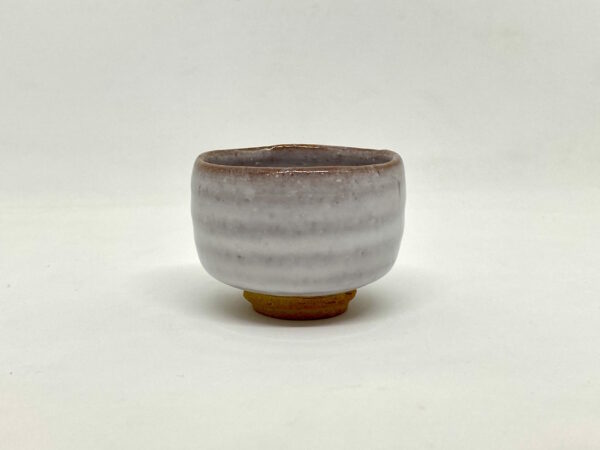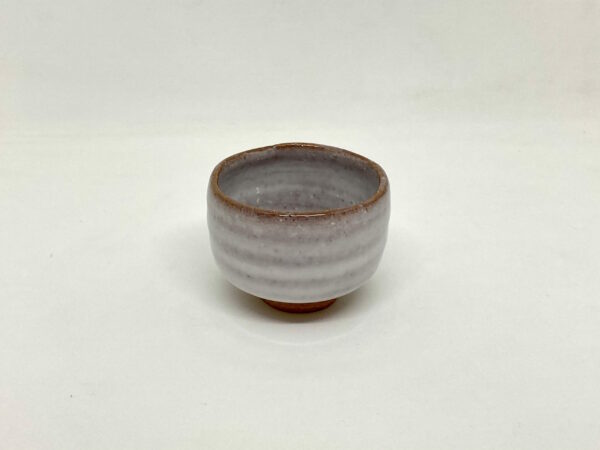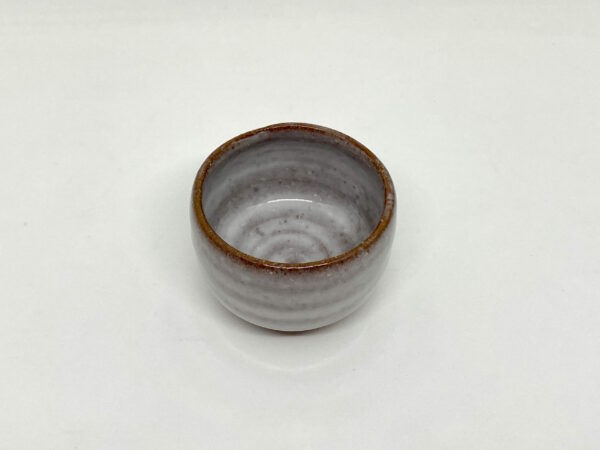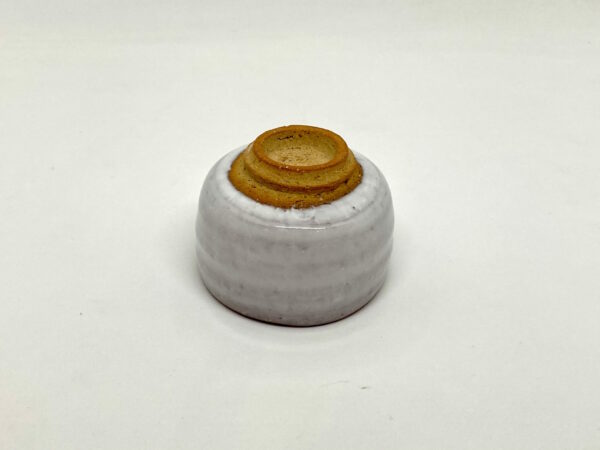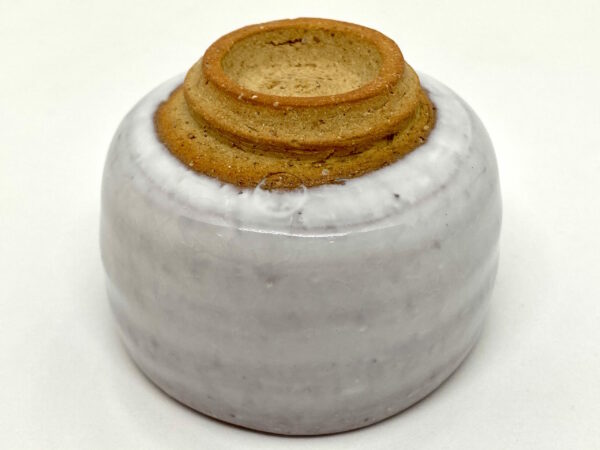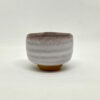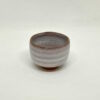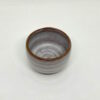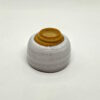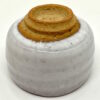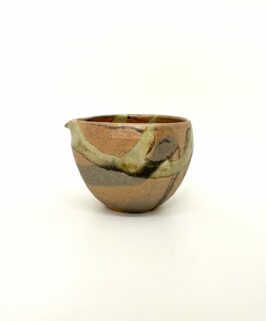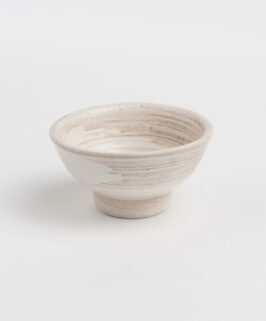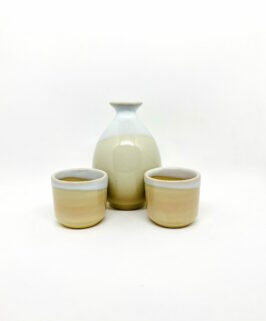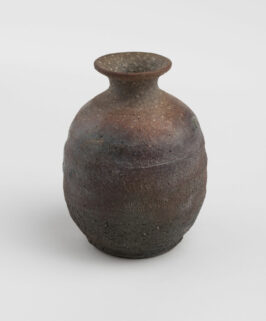Description
This beautiful “Purple Mist” guinomi is Shiro Hagi ware (萩焼, Hagi-yaki), a type of Japanese Pottery traditionally originated from the town of Hagi, Yamaguchi prefecture.
The Shiro (White) Hagi in particular, was developed by the Miwa family, one of the most highly regarded potting families in all of Japan. Their kiln was established in Kanbun 3 (1663) in the Matsumoto area of Hagi in order to produce tea utensils for Lord Mori Terumoto.
The origins of Hagi ware can be traced back to the arrival of Korean potters to Hagi on the Japan Sea, following Japan’s military invasion of Korean peninsula in the late 16th century. As a result, a large number of Korean craftsmen were abducted and transported to Japan, where they played a crucial role in establishing new pottery types such as Satsuma, Arita and Hagi ware (“hagi yaki”)
Two types of fine-grained soft clay are used as the base material. The earth is first mixed with water, then strained. During the process, wood chips are often added, causing the less dense parts to rise while the heavier parts sink to the bottom. This preparation process is repeated for two weeks until the water is entirely filtered without any residues, and the pure, fine clay is obtained from the bottom of the vat. The reddish to orange color of the clay is important as it will determine the texture and color of the Hagi surface.
The mixture for the black glaze has high levels of iron to enhance the contrast with the white glaze. The white glaze includes Feldspar and wood ash, and initially black and very thick in its viscosity. Typically, the potter dips pottery into the glaze for the white, and in extracting it by move it around for the glaze to drip slowly in the direction desired, aiming for the slowly dripping glaze to add dimension and movement to the piece. The carbon in the glaze evaporates during firing and turns into a translucent white, with the high iron glaze in black emerging from under the background.
The rich white glaze on earthy reddish brown base in the background of this guinomi, creates purply soft and dreamy appearance on this Hagi guinomi.
The purchased products will be delivered to you within 2-10 working days (Royal Mail Signed for 1st class delivery) if the products are immediately available, and it may take up to 30 days or more if the products are made to order or out of stock.
You will receive email confirmation on your estimated delivery date from us if the products are made to order or out of stock. There are occasionally extended delays on the delivery, in which case, we will notify you as soon as possible.
These are all handmade products and there will be some minor variation in colours and shapes from one to another. It is a part of their charm and I hope you anticipate it to an acceptable extent. In case of any breakage or damage on the product as a result of delivery, please kindly notify us immediately by email with the photo of broken/damaged product attached. We will replace them with a new product if the breakage and damage have been caused by our delivery.
The products should be returned within 14 days from the purchase in the exactly same condition as original and, in that case, the full price of the product will be refunded. The initial and returning delivery fees of returned products are payable by the customer and House of Sake cannot bear the cost of the initial and returning deliveries.
Refunds will be made immediately once the returning products are received by House of Sake in appropriate condition.
International Delivery
Since the United Kingdom has left the EU please note that any duty and tax are now payable by the customer when the goods are processed at the destination country and this now includes EU countries. House of Sake cannot be responsible for such payments. If an order is returned to us because any customs payments have not been made House of Sake will not issue any refunds to the customer concerned.
Please note that the Royal Mail postage methods have different compensation attached to them. If you have chosen the postage with much lower compensation total than your entire order, House of Sake can only issue a refund equal to the total of the compensation stated by Royal Mail.
1) 1st Class Signed For and 2nd Class Signed For have compensation of £50
2) Royal Mail Special Delivery Guaranteed by 1pm has compensation of £500***
3) Royal Mail Tracked 24, 48 with/without signature have compensation of £100
***if your order value is more than £500, and you have chosen Royal Mail Special Delivery Guaranteed by 1pm, we may need to contact you for alternate posting methods with additional cost.
Events
Event products have their own individual delivery & return terms and conditions. The terms and conditions above
will not necessarily apply.


